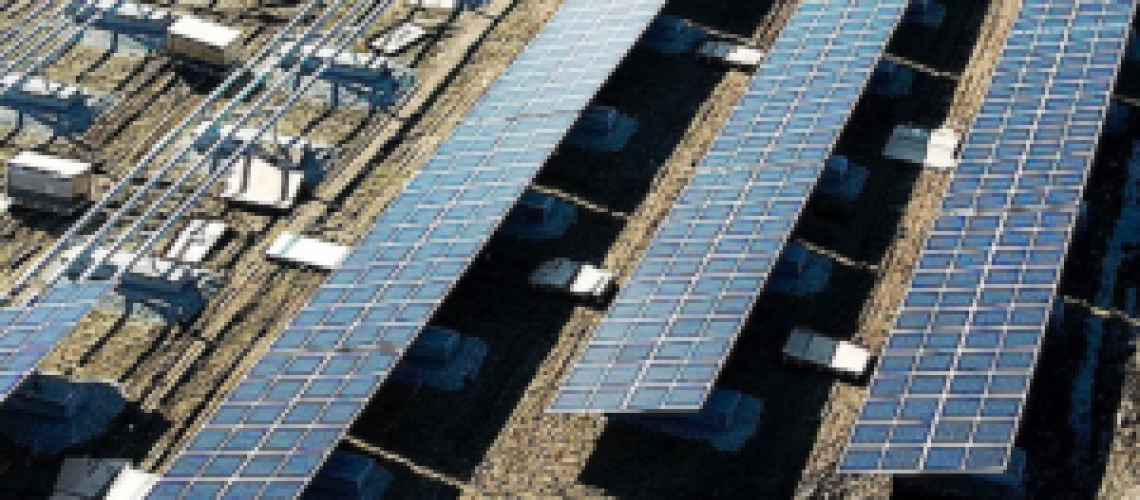The proliferation of community solar in 23 U.S. states, with requests for proposals for hundreds of MW of projects, has required a systematic approach to ordering modules and battery storage systems. With state backlogs for projects colocated on small acreages with 5 MW on average of power capacity, a 21-year old solar developer has launched an online marketplace that provides real-time and forward-looking pricing metrics that factors in the dynamics of a long-term power asset.
Anza Renewables, a marketplace for small-scale utility, community solar and distributed generation projects including storage,was spun out of Borrego, with the intention of bringing to the industry the proprietary optimization process that was first used internally by Borrego engineering and procurement teams for its own development projects. Earlier this month Anza announced its separation from Borrego and a fund raise from Energy Capital Partners’ (ECP) Energy Transition Opportunities Fund, Angeleno Group, and other investors.
Anza sees itself as a Kayak.com-type of resource for developers looking to book equipment and save capital in real-time based on market pricing curves and commodity sways, Mike Hall, co-founder and chief executive officer of Anza RE, told pv magazine USA.
Currently developers only have the tools to compare modules based on price, but they want to compare by project value, Hall said. Anza’s marketplace and search engine will compare these factors to provide value-added metrics, he added.
Before Anza, project developers would typically participate in a request for proposal (RFP) and book module orders for panels in a multi-hundred MW portfolio, Hall said. At that point, the buyer would lock-in a price that could be several weeks out of date, using a conventional sales approach where phone calls and weeks pass before a procurement is made, he said.
The distributed generation market’s maturity starting in 2015-16 created a topsy-turvy market with “hundreds of IPP buyers” participating in an out-dated system without forward-pricing mechanisms or showing long-term value in projects that were being developed in new states for that type of asset class, he said.
On the supply side, more than 40 Tier I module suppliers had ballooned in the U.S., making it difficult to connect buyers and sellers for projects, Hall recalls. Many Asian vendors selling into the U.S. DG market had a difficult time as well connecting with buyers, he added.
And using a conventional sales route, with consultants from a myriad of developers calling the same resale party such as Greentech Renewables, independent power producers (IPPs) often lost out on net present value, Hall said.
Now more than 150 companies such as Renewable Properties currently use Anza’s one-stop solar and storage marketplace, supporting rapid and optimal purchasing decisions.
The company’s proprietary technology engine behind a digital platform is a cost and performance modeling software that identifies the most optimized components based on customer-provided project details.
To date, Anza has transacted over 2 GW worth of solar modules on its software platform which connects buyers and vendors, and also provides periodic market reports showing pricing metrics, Hall said.
Anza’s marketplace sells primarily solar modules and battery systems for storage projects, as well as some interconnected inverter components primarily for storage, Hall said.
Further clarity from the federal Inflation Reduction Act with respect to the onshoring of U.S. solar and storage components could spur the company to feature more integral components to the DG system in years to come, he said. But for now the company is primarily focused on solar modules and DG battery systems for active procurement, Hall said.
Project developers can start to see cost savings using Anza following their first order, while real value is seen by the time a project enters construction. “The Anza platform is good at providing 6 quarters of forward pricing metrics, while the system is constantly sending project updates for pricing metrics,” Hall said, comparing the system to travel marketplace Kayak.com, where users receive recommendations for booking travel in real-time or waiting a matter of weeks or a month.
In addition to pricing metrics, Anza’s system is also showing users module improvements from vendors in real-time as well to illustrate not just cost savings, but project improvements on the technical side as well, Hall said.
As a software provider and electronic vendor, Anza generates revenue by receiving a “very small percentage of each transaction users maker,” Hall said about the procurement platform. Potential buyers can post project size, location and various data points onto the the platform for free and Anza generates sales from connecting the buyer with active vendors.
Anza’s marketplace was devised after the Covid-19 pandemic,and following the 2021 separation of Borrego into a development business, operations and maintenance business, Hall and the developer’s founders saw a niche opportunity on the procurement side of the business to fill in an out-dated business model with a real-time, online marketplace.
Mike Hall and brother Aaron Hall formed Borrego in 2002. And in July 2022, the San Diego-based developer, EPC and O&M provider of large-scale solar and storage projects completed a corporate spin-off and sale of its development business to Energy Capital Partners (ECP). The new development company was subsequently renamed New Leaf Energy and continued to be operated by ECP. Borrego continued to be run by Hall as an O&M provider with about 2.5 GW of projects under management.
Anza is exhibiting at Booth #3914 at the CleanPower Conference & Exhibition 2023, a national power and renewable energy industry conference taking place from May 23 to 25 at the New Orleans Ernest N. Morial Convention Center.



